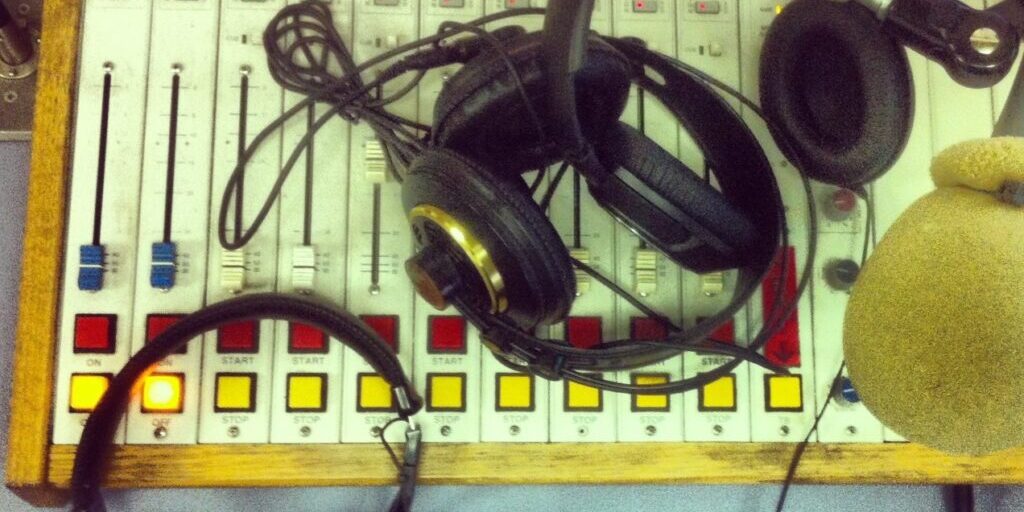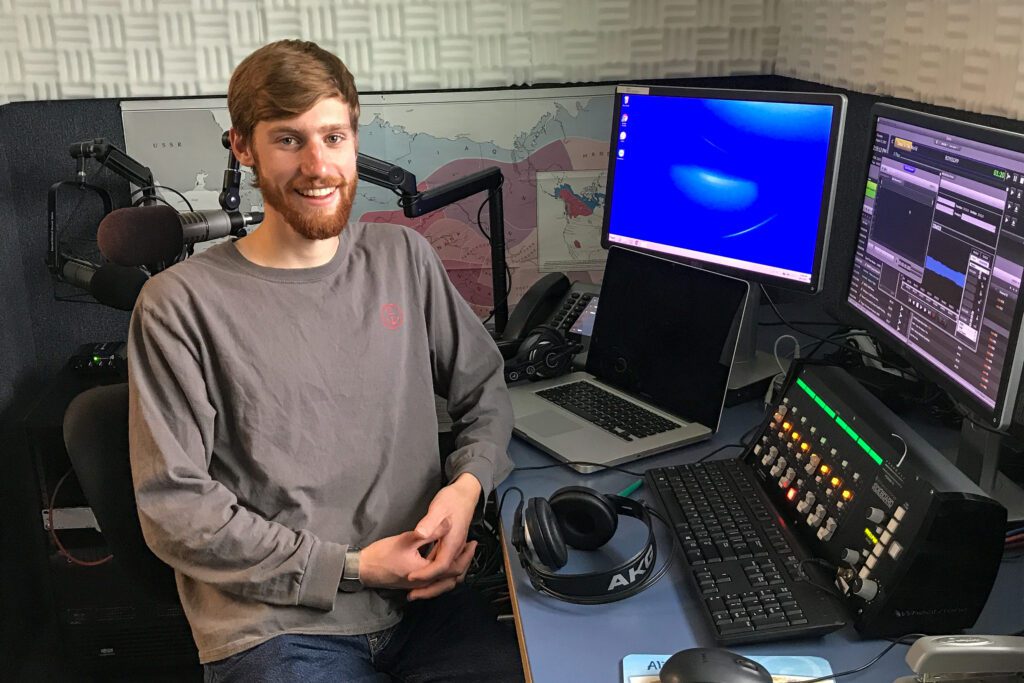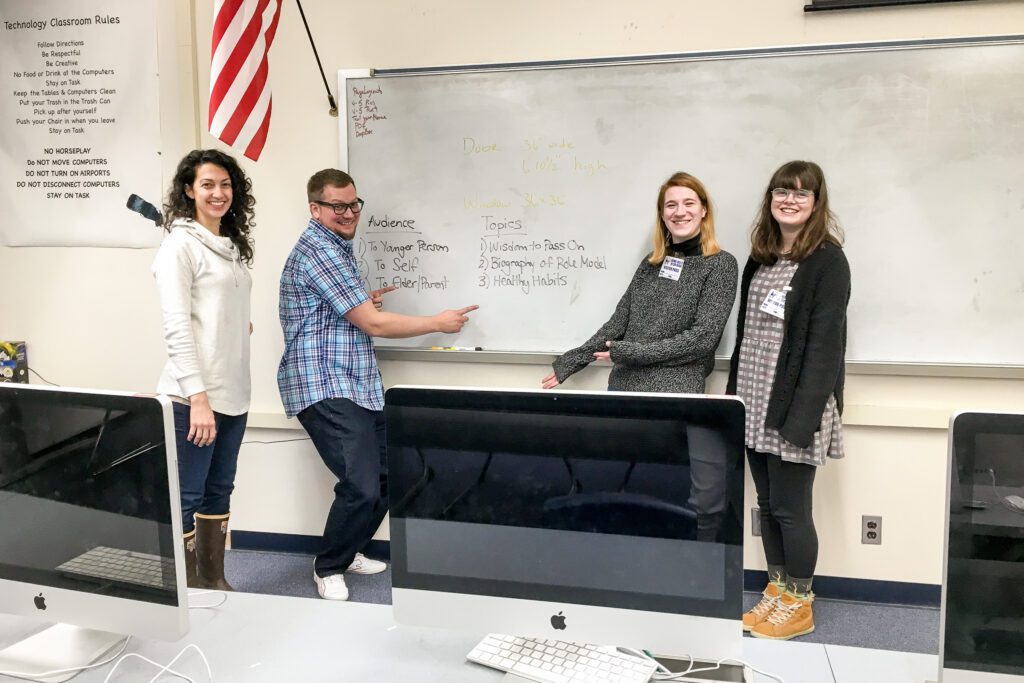I am hearing more. As I spend more time at the sounding board, or hunched over audio-editing software, or scanning phone-calls for choice snippets of detail, sound has never mattered more directly and distinctly.
Sound is different from music, although for most of my life I think I treated them as synonyms. Music, drained of its magic, is sound organized in time. From a languid sonata to a dissonant EDM club banger, intentional arrangement of discreet units of sound is the common thread—be it for a full symphonic two hours or just enough time to build before a drop.
Sound might behave like music, but it lacks deliberate design. It’s often contingent. The ambient sounds heard on a given sidewalk—traffic/birds/footfalls/chatter—are byproducts of a world at work. The difference between sound and music is the approximate distance of the natural environment from its built counterpart: we’re trained to notice intention, art, and creativity in the latter. In the former, if we pick up on it at all, there’s something charming and appreciable, but more for its elemental, organic, and crude ability to please on its own terms. And then, some sounds we just plain hate: baby shrieks/cats in heat/Styrofoam rubbing up on Styrofoam/audible chewing. Innate, learned, or wherever it comes from, some sounds provoke us primitively. Rare is the musical genre that can command such visceral verve.
The distinction between these two categories breaks down in assembling recorded sound for broadcast, like we do for work at KNOM. In a post back in September, Emily wrote about the ethical tension between fidelity and efficacy in editing interviews. In radio broadcast we use the voices of subjects as objects of proof. It’s the “show don’t tell” in a medium without any eyes. We prove a perspective/experience/argument is valid by tying it to a speaker’s voice. It’s a way of asserting, “See, they said it. It happened and it’s real.” At issue is presenting a manipulated product as wholly authentic. Emily pointed out that in editing interviews the radio etiquette is to clip rhetorical ticks (“um,” “like”), long pauses, and the meandering jarbble most of us sink into if uninterrupted longer than a few minutes. No one—not the interviewee, not the broadcaster, not the listener—is well served by the unabridged version. We edit because it makes the message better.
When you extend the admission of an editorial process in broadcasting further outward, what emerges is an aesthetic politics. Certain sounds are privileged, and come to carry more weight. Radio broadcasting has its own protocols and parameters. Magazine shows like WBEZ’s This American Life and WNYC’s Radiolab are the archetypal examples of what some call “a public radio sound.” A clear voice (Ira or Jad) speaks colloquially, massaging the listener into a sense of casual proximity. Natural sound piques up underneath to alert you where a scene is set. And dexterous cuts between subjects give the aural experience of dynamism. Both of these shows rely on incredibly elaborate and technically baroque production processes to engender that poignant feeling of casual ease. An NPR news story at the top of the hour, by contrast, is rougher. More officials speaking over granular cell-phones, rapid cuts, and sparing natural sound that lets you know a reporter was at the scene to collect a story on a protest/gun-battle/storm—anything exciting with a recognizable sound for a byproduct.
The production spectrum is wide, even if it is all too often filtered out of speakers on the same machine. And on AM radio in Bush Alaska, it’s not clear to me if our obsessive removals of errant breaths and tongue clicks makes much of a difference. But from the most polished podcast to a hastily assembled news piece about a Nome Board of Ed meeting, the production process dictates a large part of what’s ultimately heard.
Content matters. If a conversation or interview reveals deft explanation or scandal, it’s an asset to any reporter. But if that interview was recorded over a shoddy cell-phone connection, it’s the equivalent of having a revelatory quote with a grammatical mistake or a TV-news eye-witness who isn’t telegenic. Art is not the point of a news story. But reporters are keenly aware of the beauty and grace in the primary source material they are building crude copy around. Sources are more sympathetic if they sound precise/proximate/pretty—it breaks down the distance between speaker and listener, engenders empathy by giving the sensory impression of being closer.
Beauty is the invisible bias to reporting, especially broadcast reporting. And each medium has its predilection when it comes to editing all a subject offers into a neatly presentable parcel. Print is not a broadcast medium, but it still has a beauty bias. It privileges precision: direct quotes that cut quickly to the heart of the matter; slogans to substantiate written flecks of analysis and context. TV esteems expressivity and sympathetic signifiers. Telegenic doesn’t equate to beautiful, but to watchable. And while pretty people get put in front of cameras more often (and this is true in TV news, too, not just produced pageantry), awkward, gaping model-types hinder more than help a broadcast.
As I learn to hear sound more fully I’m not only detecting our medium’s broadcast bias, but taking part in it. Some voices not only sound better, but are easier to talk to. Voices that speak with authority (often from positions of power and privilege) sound more authoritative over the air. Verbal acuity and fast-paced speech make for better sound-bites and pack more information into the 30-second clips most radio producers shoot for. Cultural and class similarity make the small-talk before an interview less painful over the phone. In my own experience, it has been vastly easier, for a whole host of reasons, to talk with executives of mining companies than whaling captains, company spokespeople in Anchorage than rural residents who live in the paths of proposed roads. The production bias overlaps with the broader functioning of social power: those with resources are more adept at commanding sway than those without. It is to be watched after.
When I was just a radio-listener I heard it all as sound: naturally occurring and free of artful design. I didn’t notice that I heard certain types of voices more often than others, and never thought to wonder why. As I compose more news pieces and longer works, though, I’m hearing it more like music: sounds organized through human effort. Not unreal, but constructed, and subject to a host of parameters/pressures/protocols—expectations that in order to making something sounding official, you’ve got to get just the right amount of naturalness.







